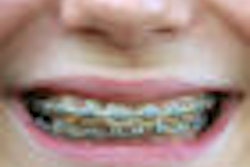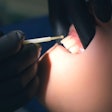
In "The Curious Case of Benjamin Button" -- a short story published by F. Scott Fitzgerald in 1921, made more famous by actor Brad Pitt's portrayal of the lead character in the 2008 film version -- a baby born with the features of an elderly man ages backward to an infant, living a life that spans seven decades, but in reverse.
Was Fitzgerald actually taking literary license with a rare condition known as Hutchinson-Gilford Progeria Syndrome (HGPS)?
 |
"So few people have heard of this disease or had any experience with it," Dr. Maloney said, noting that at any one time there are only about 20 people in the world with progeria. "It is so rare that no one in the past 140 years has spent much time, energy, or money researching these people. They are cast off as an extremely rare group of unfortunate individuals who will die at 15 to 16 years of age."
According to Dr. Maloney, the first documented case of HGPS was reported in 1886 by Jonathan Hutchinson. The following year Hastings Gilford described the second known case and coined the term "progeria."
More than a century later, because the disorder affects only one child in 4 million, there is still a general lack of understanding of its exact cause, although Dr. Maloney points out that it is a "novo-point" mutation -- that is, it occurs at the moment of conception and has nothing to do with the parents' DNA or other genetic factors. "There is something that goes wrong with the fertilization," he said.
Dental manifestations
Individuals with HGPS generally appear normal at birth, developing the first signs of the condition within the first two years of their lives, Dr. Maloney noted. This is also when the accelerated aging process begins and the children start to display many of the characteristics of an elderly person, from atrophic skin and conspicuous veins to stiff joints, protruding ears, and easy bruising. Death is caused primarily by cardiovascular abnormalities, including rapidly progressive atherosclerosis.
A number of dental manifestations associated with HGPS have also been identified, according to Dr. Maloney. These include:
- Secondary incisors located lingually and palatally
- Delayed tooth eruption of primary and secondary dentition
- Abnormal tooth formation
- Anodontia
- Hypodontia
- Discoloration
- High caries incidence
- Poor oral hygiene
- Narrow pulp chambers
- Irregularity in sizes and shapes of the permanent teeth
- Delay in calcification of the crowns of the permanent teeth
- Reticular atrophy of pulp
- Calcification along the nerve fibers and the vascular walls
- Incomplete formation of roots of primary molars
Dentists need to be particularly concerned with the condition of micrognathia, which can lead to a delayed loss of deciduous teeth and overcrowding, Dr. Maloney added.
"Since HGPS is diagnosed based upon signs and symptoms, dental professionals play an important role in the diagnostic stage by documenting any abnormal findings which are evident upon clinical and radiographic examinations," he wrote.
— William Maloney, D.D.S.
There are potentially larger implications as well. "Research will allow us to understand if HGPS ... is nature's way of presenting to us a rare and precious opportunity to see the effects of aging in a dramatically accelerated fashion and understand the cellular mysteries of natural aging," Dr. Maloney wrote.
Research into the origins and manifestations of HGPS could also yield treatments that can enhance the quality of life for individuals with the condition, and perhaps even medications that reverse the natural effects of aging, he added.
"It's almost nature's ironic gift to us," Dr. Maloney said. "If we could open our eyes and see what nature has placed in front of us, that this is actually warp-speed aging, I would postulate that some sort of fountain of youth could be found in these individuals."
He also believes that Benjamin Button has a deeper meaning.
"The whole point of Fitzgerald's story is that to truly understand life -- the mistakes, the crossroads -- is to live it retrospectively, looking backward," he said. "But you can't live life like that. You have to live it going forward."
Copyright © 2009 DrBicuspid.com



















